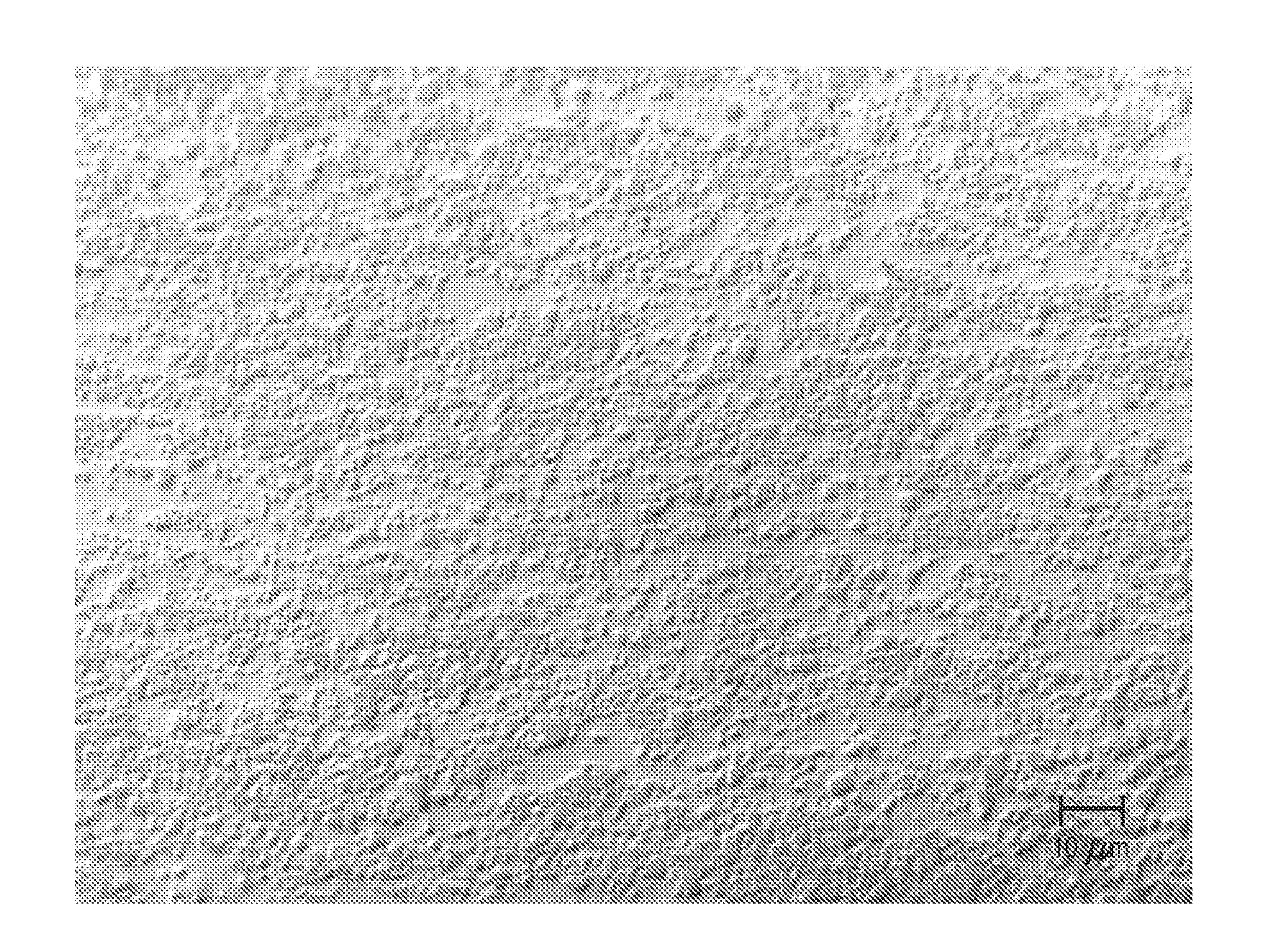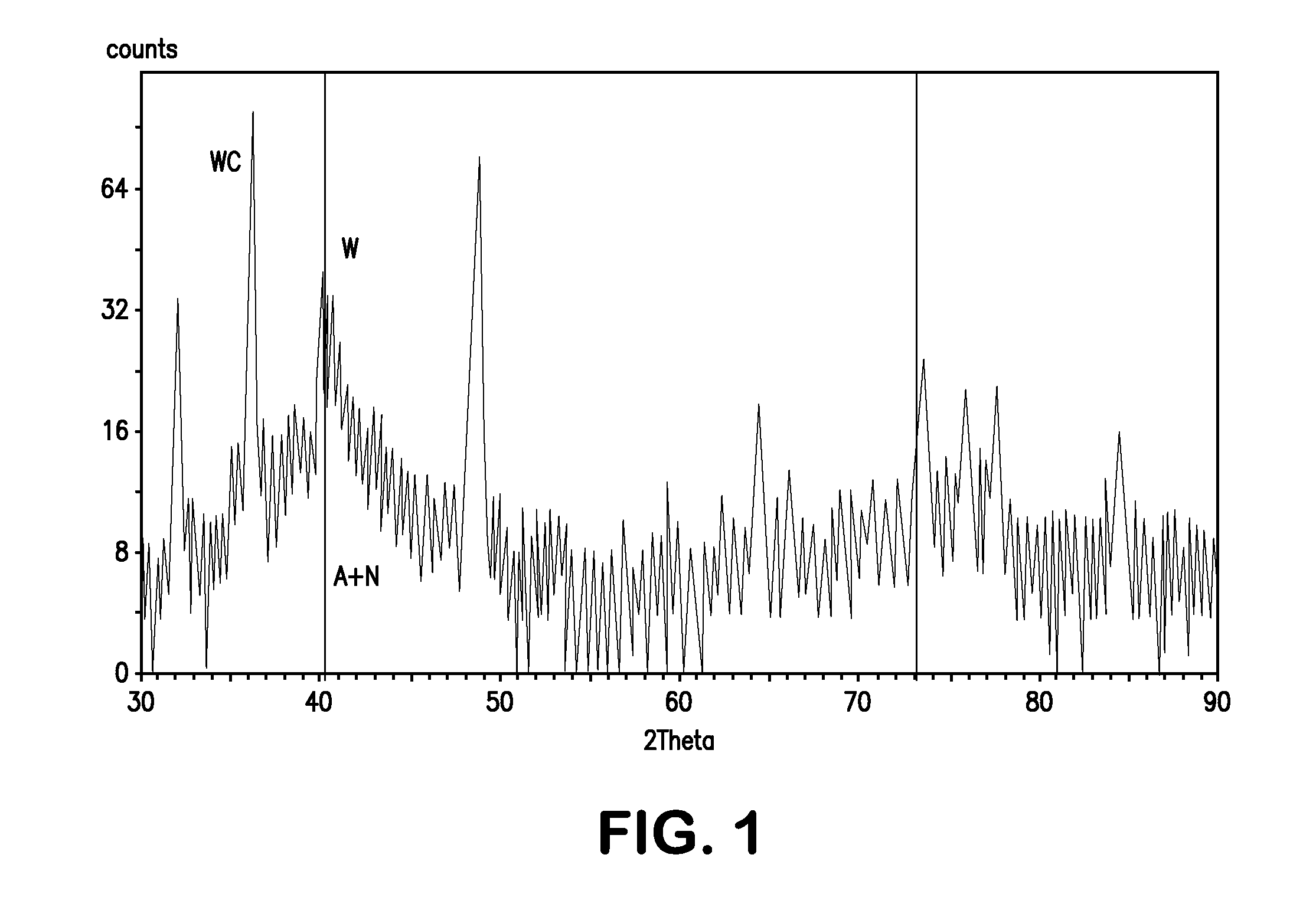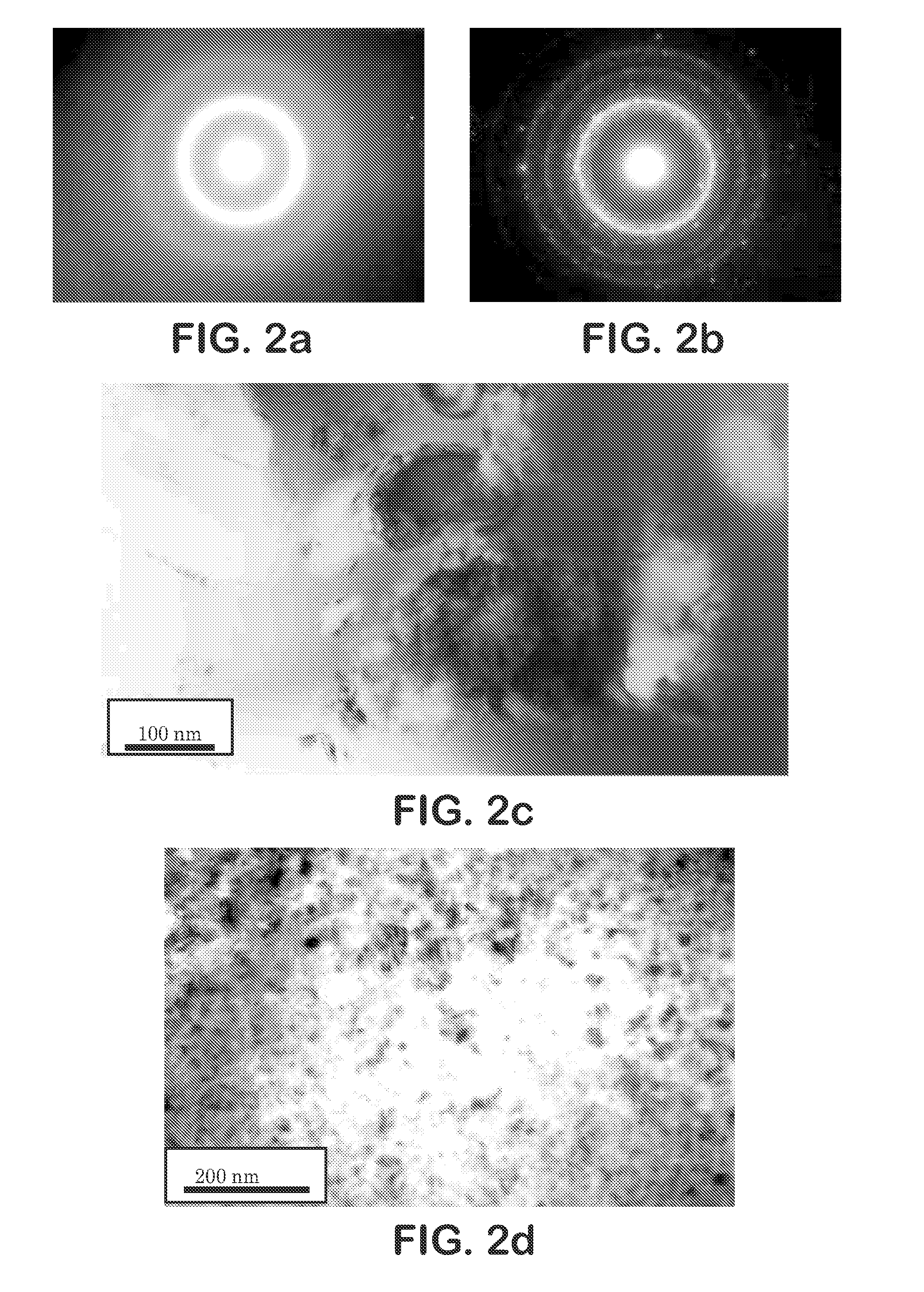Amorphous-nanocrystalline-microcrystalline coatings and methods of production thereof
a technology of nanocrystalline materials and microcrystalline coatings, applied in the field of amorphous nanocrystalline microcrystalline coatings and methods of production thereof, can solve the problems of ineffective practical application of thin layers without bonding to parts, hardness and brittleness of nanocrystalline materials, and achieve the effect of improving wear resistance and corrosion resistan
- Summary
- Abstract
- Description
- Claims
- Application Information
AI Technical Summary
Benefits of technology
Problems solved by technology
Method used
Image
Examples
example 1
[0078]Coatings from WC—Co-based compositions were prepared in the following manner. The coatings were sprayed to a thickness of 120 mils with a commercially available powder (−325 mesh) through a detonation gun with firing frequency 75 Hz and equivalence ratio 1.85. The hot gases (products of detonation) were melting the powder during transportation of the powder to the substrate. Upon impact, the droplets spread and rapidly solidified. When the next monolayer was depositing, the previously solidified the solid layer was subjected to heat and deformation from the powder-gas stream.
[0079]The coatings were characterized by x-ray diffraction (XRD), transmission electron microscopy (TEM), optical microscopy, scan electron microscopy (SEM), differential thermal analysis (DTA), polarization corrosion resistance test, and sand abrasion and sand erosion tests provided in accordance with ASTM standards.
[0080]The typical XRD pattern representing amorphous matrix reinforced with bimodal nanocr...
example 2
[0087]The Fe(balance)-Cr—P—C composition is a composition which in amorphous condition has extremely high corrosion resistance, but this composition has high critical solidification rate (above 105 K / s) to obtain an amorphous structure from liquid phase. The rate can be achieved by conventional rapid solidification methods only in foil / ribbon thinner than 2 mils. That did not allowed use of this material for the practical purposes.
[0088]The detonation method described in Example 1 was used to deposit a bulk amorphous coating with nanocrystalline-microcrystalline strengthening phases as thick as 120 mils. The coating contained about 90% of nanocrystalline-amorphous phase, and about 10% of microcrystalline phase. The coating XRD pattern confirmed the amorphous structure.
[0089]The bulk amorphous-nanocrystalline-microcrystalline coatings from Fe-based alloy had corrosion resistance significantly higher (more than 10 times) than stainless steel (FIG. 5). The bulk amorphous-nanocrystallin...
example 3
[0091]A coating sprayed with the detonation method described in Example 1 from MCrAlY+Al2O3 (20-50%) composition exhibited bulk amorphous-nanocrystalline-microcrystalline structure with about 80% of microcrystalline metal phase, about 10% of amorphous (ceramic) phase, and about 10% of nanocrystalline-phase.
PUM
| Property | Measurement | Unit |
|---|---|---|
| Grain size | aaaaa | aaaaa |
| Grain size | aaaaa | aaaaa |
| Thickness | aaaaa | aaaaa |
Abstract
Description
Claims
Application Information
 Login to View More
Login to View More - R&D
- Intellectual Property
- Life Sciences
- Materials
- Tech Scout
- Unparalleled Data Quality
- Higher Quality Content
- 60% Fewer Hallucinations
Browse by: Latest US Patents, China's latest patents, Technical Efficacy Thesaurus, Application Domain, Technology Topic, Popular Technical Reports.
© 2025 PatSnap. All rights reserved.Legal|Privacy policy|Modern Slavery Act Transparency Statement|Sitemap|About US| Contact US: help@patsnap.com



